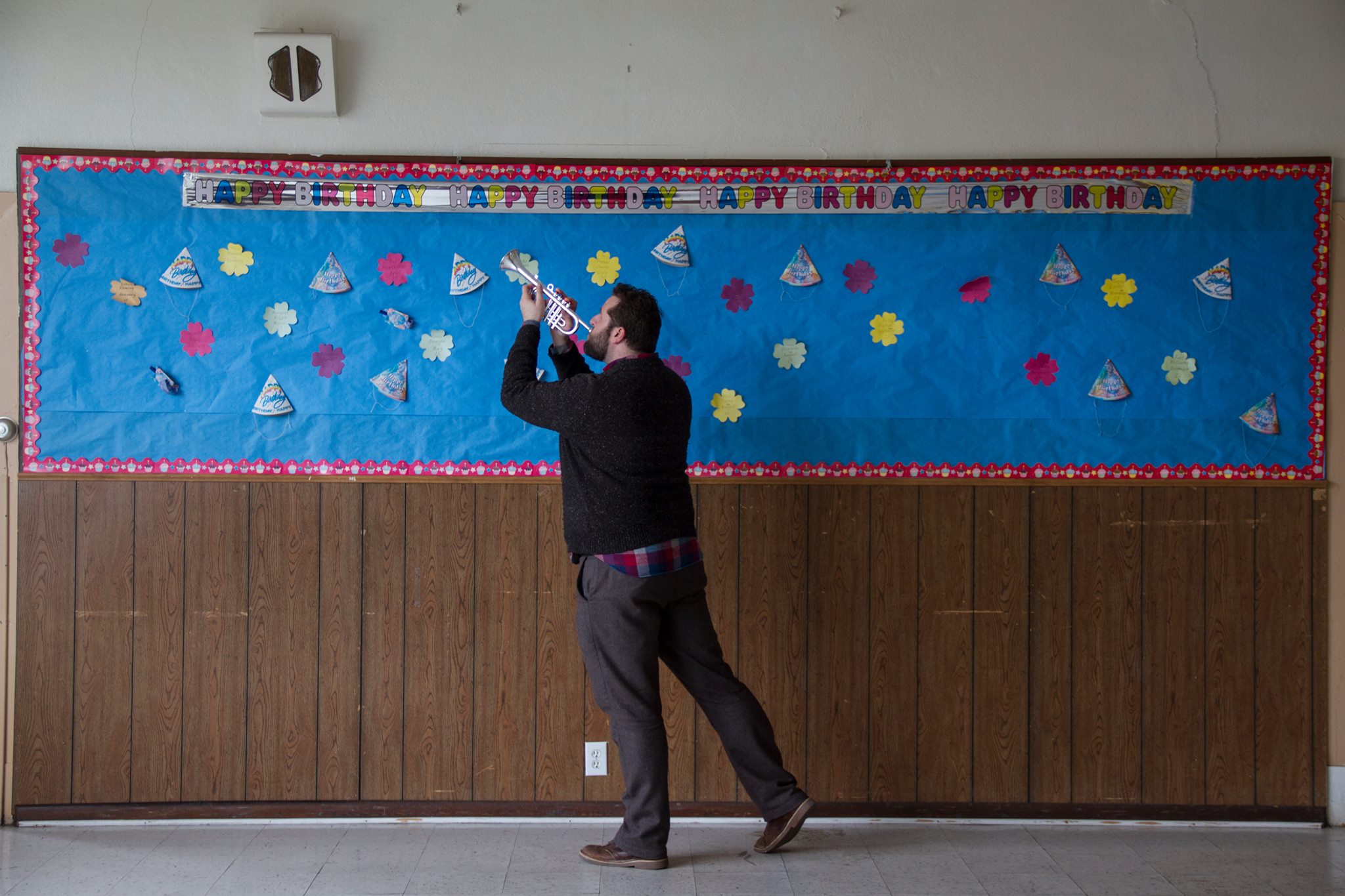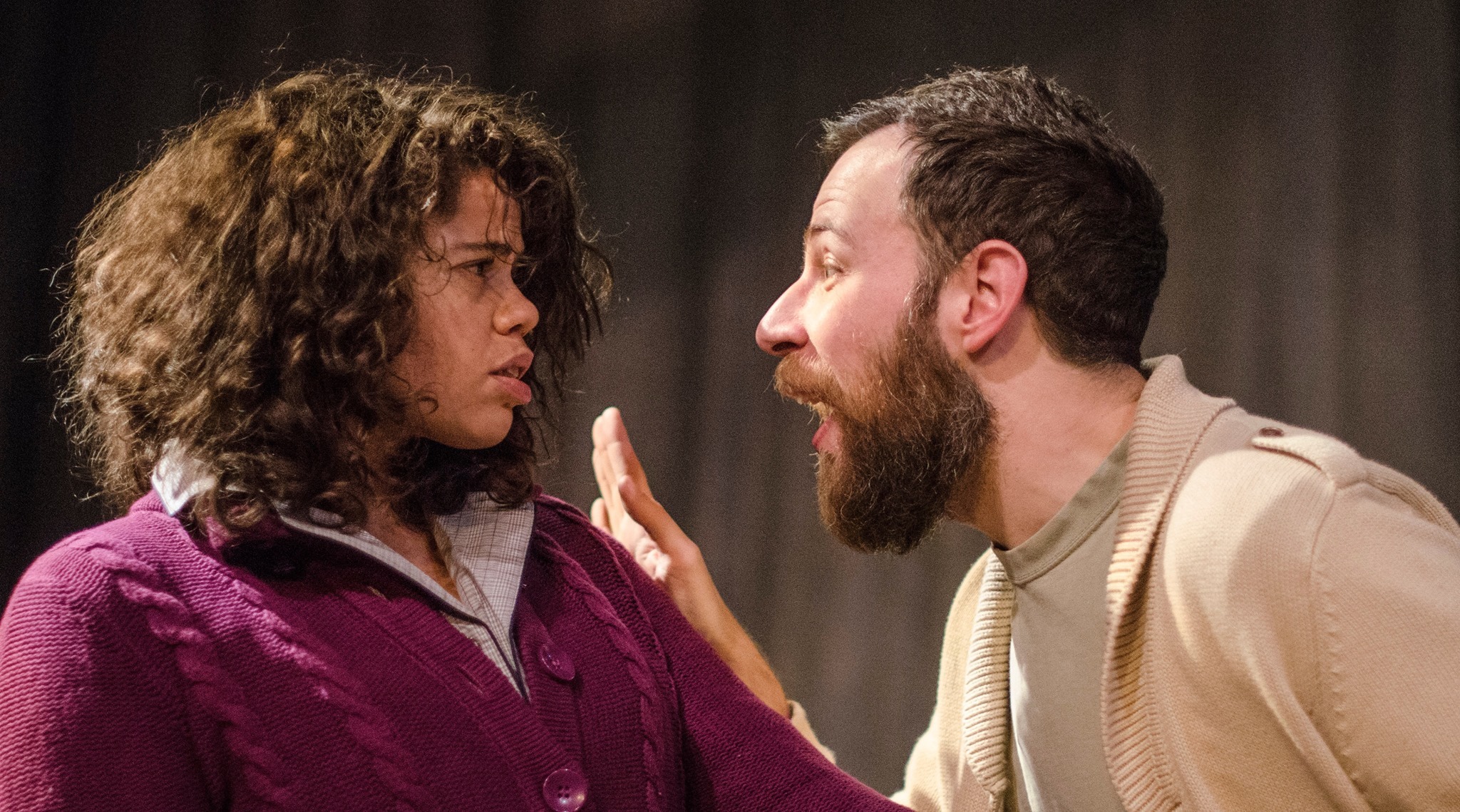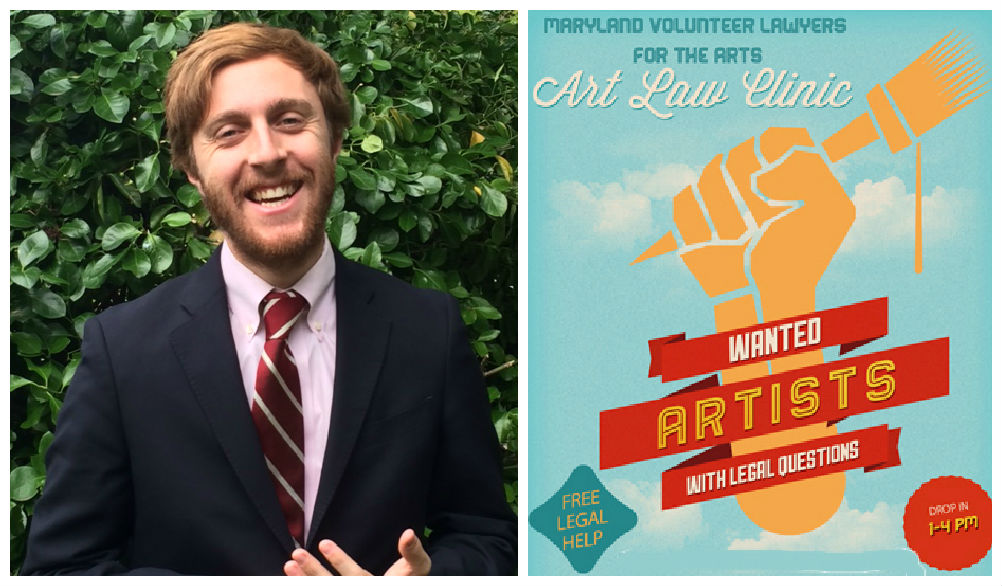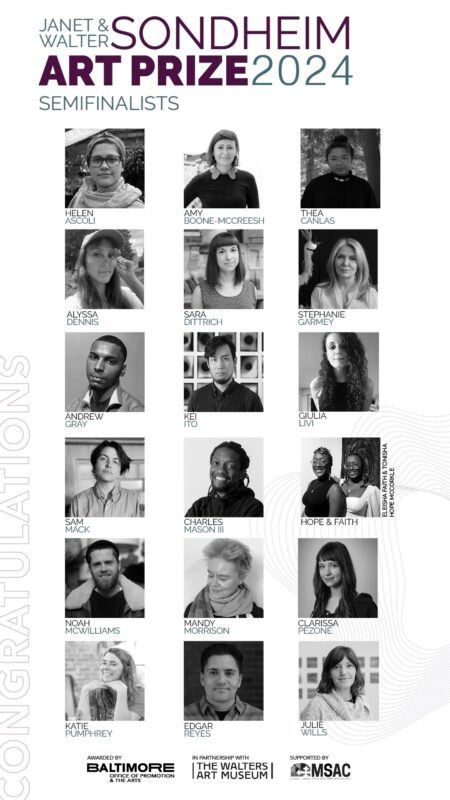If you are a Baltimore artist with a legal problem (or question), Adam Holofcener, Executive Director of the Maryland Volunteer Lawyers for the Arts, is your go-to source.
by Cara Ober
“I’m a musician moonlighting as an attorney who is also a copyright geek,” Adam Holofcener confesses. “And I have the ONE job in Maryland where I get to think about art and the law all day! The only one!” He practically claps his hands with glee after this admission.
The enthusiastic attorney turned non-profit director of Maryland Volunteer Lawyers for the Arts (MDVLA) can scarcely believe his good luck after taking the helm of a 30-year old organization that has had its ups and downs – and frankly, local artists should feel the same way. Holofcener started his position in September 2014, and his energy is evident in the organization’s new string of events and workshops.
“I feel beyond fortunate to be here,” he continues, describing the circuitous turn of events that led him to his current professional status from his origins as a jazz musician, DJ, and punk rock guitar player. Holofcener, who grew up in Baltimore County, attended the University of Mary Washington and double majored in music and literature while working in Washington, DC for a few record labels. After college, he organized arts education programs at the non-profit Young Audiences in New York City.
At Young Audiences, Holofcener discovered legal issues he found fascinating as well as the “glass ceiling of arts non-profit organizations.” When it came time to pursue his next educational step, he considered getting a graduate degree in music, but ultimately decided to attend law school at the University of Maryland.
“After college, I had a hard decision to make: Was I going to attend a grad program in Avant garde music where I would only be able to have a relevant conversation with ten people for the rest of my life? Even as it pained my misanthropic tendencies, I decided I was going to try and interface with the community in a broader way,” he says.
During law school, Holofcener worked as an intern at MDVLA with former director Marcia Semmes and then headed to Los Angeles to pursue a legal career where he worked for a program of the attorney general and focused on the real estate and foreclosure markets. In a serendipitous move, his wife, an immigration attorney, accepted a job in Falls Church, VA at the Board of Immigration Appeals, when, at the same time, the executive director position at MD Volunteer Lawyers for the Arts opened up. “The timing was perfect,” he says. “It just worked out.”
Now, back in Baltimore, Holofcener is determined to bring two disparate communities together for the betterment of both: artists and lawyers. Besides officially sponsored events like seminars and workshops, Holofcener thinks it’s important to create informal opportunities for artists and the legal community to come together.
“Last Friday we did a happy hour at Windup Space and had some bands,” he explains. “Artists need to be able to interact with the legal community… even if to just have a drink, a casual conversation. It’s important to realize lawyers are not as different as they think they are, just to build that reference point.”
“Everyone calls me for legal services with a five alarm fire,” he continues. “I am constantly dealing with people getting screwed – and this is the most difficult situation to fix. It’s much easier to solve problems before they happen. We are all about preventative care.”

So what can Holofcener and MDLVA offer to Baltimore’s artists? And who is eligible for their services?
“Any artist, any medium, any creative enterprise can come to us,” Holofcener explains. The organization translates the word ‘artist’ as broadly as possible and they can help with any issues that pertain to your livelihood as an artist.
“Every artist is a small business,” he says. “Whether they realize it or not, so much of what we do has to do with small businesses. We have good relationships with other city entities, so we can help them to access the services that are available.”
On the whole, the MDLVA deals with three main issues: about 1/3 intellectual property, copyright, and trademark claims, another 1/3 contracts of all type including employment and licensing, and 1/3 general issues which can pertain to live/work real estate, starting a non-profit, trusts and estates, and starting a business.
In terms of services available, there are four main aspects of the MDVLA’s programs and a number of ways for artists to access information – either as preventative medicine or in an emergency.
First, the MDLVA offers a pro bono legal referral program. Although Holofcener is an attorney, he does not do one on one client work. Instead he organizes a network of volunteer lawyers who donate their time specifically to help artists, artist organizations, and non-profits. To qualify, individual artists need to make less than 40k per year for their household income and arts organizations must have an operating budget of less than 150K. However, even if you make more than this, they can often arrange discounted legal services that you would never be able to afford otherwise.
“We can still help you if you are above the income level,” he explains. “Our organization provides legal information, so if you have questions, we have a repository of information. Even if we don’t provide direct legal advice, we can help to frame the conversation. We can help you to structure your legal questions or take more advantage of attorney time. Or, sometimes we make you realize you don’t need a lawyer at all.”
Some of the attorneys come from large firms, but others are solo practitioners or come from smaller firms. Either way, a client would need to make a large amount of money to afford their services. Holofcener is interested in broadening the network in the coming year, and in training more attorneys interested in participating.
“For the big firm attorneys,” he says, “And lots of the volunteers are from big firms, this is the most fun they get to have as lawyers.”
There is a $35 fee for solo artists and $100 fee for arts organizations, and this covers administrative costs, but all attorney time is free. The only costs are usually the state or federal fees associated with your project, like registering copyright or state registration for a business.
The second option to access the MDLVA’s resources is to attend a free Art Law Clinic.
“This is based off a model of Just Advice, which is a general pro bono law program, where you can show up and talk to an attorney for free,” Holofcener explains. Clinics are held in roving locations, typically in Baltimore’s three arts districts.
“We take walk-ins, but we also make a lot of appointments for this,” he says. “Someone can walk in off the street with a $500 legal question and get it answered for free.” Workshops typically last three hours, with 30-minute appointments. Typically, the MDVLA handles much of the intake, helps artists to figure out their issues before attending, and assists in preliminary research – “to avoid craziness.”
The third option to receive information from the MDVLA is to attend their seminars and workshops. They recently hosted a fair use talk at the Station North Chicken Box. The month before, they gave a lecture at the Baltimore Museum of Art about art theft, centering on the recently returned stolen Renoir. Next month, they would like to host a Hip Hop artist panel at Red Emma’s.
Lastly, the MDVLA publishes a quarterly ‘Arts Brief’ that deals with current legal issues, as well as general information about the organization and events. Anyone can read it or subscribe. You can sign up for their mailing list or check their website for upcoming events.
As we wrap up our conversation, Holofcener talks earnestly about developing roles for artists to be cultural ambassadors, the connections he would like to forge between the creative community and the legal one, and a future Baltimore where creative practitioners are able to build solid businesses and lives here.
“As a musician myself, it was important for me to realize that there’s so much going on outside of that community,” says Holofcener. “There’s a lot of money and power and planning going on in this city and artists deserve to play a part in the decisions. But, if you’re not a part of those conversations, no one is going to come and find you. It is my hope that our programs create opportunities for all kinds of connections to be made.”
Author Cara Ober is the Founding Editor at BmoreArt.









